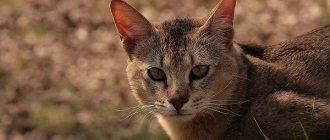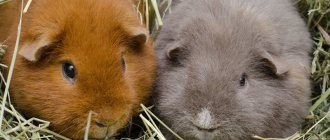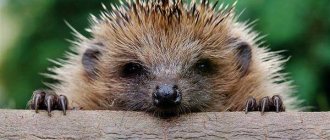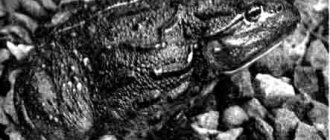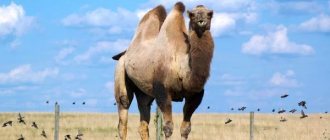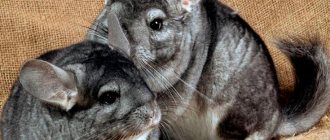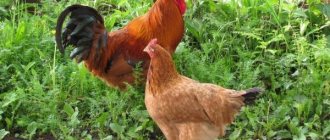Harsh desert conditions
Living organisms entering the desert have a hard time. The fact is that unfavorable living conditions make their own adjustments to life, creating a huge number of various problems for all living things. The fact is that water in deserts is a rare pleasure, the ambient temperature is very high, and food for animals is becoming less and less. These are real extreme conditions.
Protective coloration and mimicry
Protective coloring is the ability of animals or plants to camouflage themselves in the environment to become almost invisible. This saves them from predators. But sometimes predators also use mimicry to sneak up on their victims unnoticed. Mimicry is a useful method of camouflage for animals when they become very similar to some other creatures or objects of the surrounding nature. The fur color of the Arctic fox changes depending on the time of year; In winter it is snow-white, in summer it is red-brown. This is one example of mimicry. Flounder, changing its color, becomes almost invisible to predators. The flowers of the bee orchid are very similar to bees, this attracts real bees to the flowers, who are looking for a friend. They carry pollen on their paws and pollinate flowers.
Animals in the desert
Living organisms that constantly live in the desert were forced to adapt to unbearable local conditions of existence. Evolution has decreed that local animals have developed certain properties that allow them to adapt to the unique desert climate.
For example, desert toads in the hot summer heat fall into a kind of desert anabiosis - a state of rest. That is, during hot periods, these amphibians burrow deep into the ground and wait for the next cold snap or rain. As soon as it gets cold or rains, the toads come out of their shelter for food and water.
Many desert animals (for example, gophers) generally constantly hide in underground shelters - in caves or burrows. They come to the surface of the earth only at night or early in the morning. The fact is that it is at this time that the desert becomes more or less cool.
In addition, the unbearable conditions of existence in the desert have equipped some animals with the ability to cope with high temperatures in a unique way. For example, desert hares, resting in the shade, give off heat using their large ears. Many desert birds (such as owls) remove heat from the body using an open beak: saliva drips onto the body, which cools by evaporation. By the way, birds are the easiest to tolerate the desert climate, since they are able to fly.
It is curious that desert animals with light fur, plumage, skin or scales absorb several times less solar ultraviolet radiation than the rest of their “countrymen”. One of the woolly representatives of desert inhabitants is, of course, the well-known camel.
Birds
Birds found in the desert include eagles, vultures, Mediterranean falcons, African ostriches, desert larks, sandgrouses, golden avoc-billed woodpeckers and many others.
Compared to most other desert inhabitants, birds have great advantages. Unlike mammals with a constant body temperature, the body temperature of birds is much higher, so they tolerate heat more easily. But even more important is that they can fly, which makes it possible, in extreme heat, to rise higher into cooler layers of air.
Birds of prey circle in a column of rising air high above the desert, where it is much cooler than at the surface of the earth. But most often in the midday heat, birds sit motionless under bushes or among tree branches. They shift their activity to more pleasant morning hours.
PHENEC
The smallest representative of the canine family. Height at the withers is 18-22 cm. The fennec's ears are the largest among predators in relation to the size of the head; they reach 15 cm in length. The fennec cat needs large ears in order to learn from the slightest rustle in the sand about the movement of its main prey, insects and small vertebrates, and for better cooling of the body in the heat of the day. The foot is pubescent, and this allows the fennec to move along the hot sand. Its teeth are small (especially the fangs), similar to the teeth of a bat-eared fox. The fennec's hair is tall, thick and soft, of a protective color: reddish or fawn on top, white below. The tail is fluffy, with a black tip.
Insects and arthropods of the desert
Scorpion
Scorpios have 6-12 pairs of eyes. However, vision is not the main sense organ for arthropods. The sense of smell is more developed.
Scorpions can go without food for 2 years. Together with toxicity, this ensures the survival of the species. Scorpions are already 430 million years old. This is exactly how many adults carry numerous children on their backs. They ride on their mother for the first week of life. The female protects the offspring, because few dare to attack an adult scorpion.
Darkling beetle
These are desert beetles. In the photo, the desert animals are small, coleopterous, and black. This is one of many subspecies of darkling beetles, called the desert slugger. The beetle's front legs have teeth.
Darkling beetles of other species settle in the tropics, in the steppes, and even in human homes. Being nocturnal and hiding under wooden floors, insects rarely catch the eye of the owners of the building. Therefore, in the old days, meeting a beetle was considered bad luck.
Scarab
Most of the 100 species of scarab are native to Africa. Only 7 species of beetle are found in Australia, Europe and Asia. In length it is from 1 to 5 centimeters. The appearance of the animal is similar to the dung beetle. The species are related. The activities of insects are also related. Scarabs also roll dung balls, rolling them along the sands.
Scarabs bury dung balls in the sand, jealously guarding them from other beetles. If they encroach on the food supplies of a relative, there will be a fight.
In ancient times, the scarab was considered a sacred deity
Ants
In deserts, ants build houses not so much above as below the ground. Only the entrances to the anthills are visible. The system of passages is inhabited by long-legged individuals. Otherwise you will simply drown in the sand.
In deserts, ants rarely find food. That's why families have colonies of so-called honey barrels. They have elastic bodies. When filled with food, they can stretch 10 times. These are the animals that live in the desert . They fill their bellies with honey barrels in order to feed their relatives during dark days, weeks and even months.
Smoky Phalanxes
This is a spider. The animal reaches 7 centimeters in length. The animal is distinguished by powerful chelicerae. These are the mouthparts of spiders. In the phalanx they consist of two parts fastened like a joint. The general appearance of the arthropod's chelicerae is similar to the claws of a crab.
Of the 13 species of phalanxes, only one lives in forests. The rest are inhabitants of deserts and semi-deserts of Sri Lanka, Pakistan, India, Turkmenistan, Kyrgyzstan.
The ways in which different species of animals adapt to the harsh conditions of living in the desert are varied and interesting. If in areas of more heavy rainfall the period of intensive replenishment of animal numbers occurs in the spring, then in the desert it begins after the rainy season. This catches the eye of even a casual person. A wide variety of insects appear everywhere - bees, mantises, grasshoppers, butterflies. But at night, car headlights are covered with a host of moths. Winged termites circle to the sky in search of new colonies, and are constantly accompanied by excited groups of insectivorous birds. Unusually heavy rainfall can bring in insects that haven't been seen here in years. An interesting observation of this phenomenon in the Musgrave Mountains was made by H. G. Finlayson in December 1933, when the air was literally ringing with the singing of cicadas (Thopha colorata). Although the aborigines had a name for this insect, young people had never seen it with their own eyes. This insect is probably identical with the American cicada, in which winged forms appear in some only every seventeen, and in others every thirteen years. Filling clay pits and depressions in rocks with water leads to the appearance of frogs and shield bugs. Bird nesting is confined to the rainy season, and there is evidence that both birds and some small mammals bear more offspring in favorable seasons.
The underground life of animals in the desert is more common than in other places, since, apart from the insulation that the soil provides them, they have no protection from excessive heat, cold and aridity. Many lizards can withstand the heat of the sun, but some have been known to die if left in the open sun for more than a few minutes. This is also typical for small mammals. In addition to underground shelters, reptiles and insects find refuge in rocks, caves and crevices. Most of the animals characteristic of the desert are nocturnal, appearing after sunset, when it becomes cooler and it is more difficult for predators to detect them. Many of them go out to drink only after dusk. Some species quench their thirst with drops of dew, while others, apparently, are able to do without water at all. Physiologist K. Schmidt-Nilsson notes that in the American desert, kangaroo rats (Dipodomys) have adapted to retain fluid in the body and obtain water from the fatty seeds of the plants they feed on. It is possible that some species living in the Australian desert adapted after their example. After all, the camel’s ability to go without water for several days has become a proverb.
Hoarding food and storing it underground is common among various species of desert animals, including termites and honey harvesting ants. The latter store nectar in the abdominal cavity of the so-called worker ants, which inflate until they become the size of a pea and can no longer move. Aboriginal people consider honey harvesting ants a delicacy. Some Australian reptiles and small mammals have a very peculiar way of accumulating reserves - deposition of fat in the tail, and in these cases the thickness of the tail can be used to judge the condition of the animal. Another way to conserve feed and water is to reduce the need for it. Summer hibernation is characteristic not only of frogs, but also of many other animals: crabs (Telphusa), crayfish (Asacopsis) and many minnows. Snails have learned to withstand the heat by sealing their shells with mucus.
We have already indicated that in the desert all the most active birds and kangaroos lead a nomadic or semi-nomadic lifestyle, looking for new, more convenient places to live if conditions in the previous place become unfavorable. Unfortunately, we know little about the ecology of animals that do not leave their habitat and remain active under any conditions. Obviously, one or another food can be obtained in the desert all year round. Rodents and some insects are satisfied with plant seeds, and the moloch and marsupial mole are satisfied with ants. Birds of prey usually hover in the sky, feeding on carrion, and the presence of various insectivorous birds in the undergrowth and in tufts of thorny grass is proof that they are provided with small pickings, although meager.
Some desert animals have adapted to walking on sand, as evidenced by the flattened toes of a number of lizards. Desert animals on all continents acquired the habit of moving in leaps independently of each other, perhaps because it is more difficult to catch them this way. Coloring also plays a significant role. Although there are many exceptions to this rule, species living in the desert are characterized by a paler and reddish coloration than those living in areas where there is more rainfall. This can be seen in many lizards, as well as in birds such as the emu wren (Stipiturus ruficeps) and the white-faced warbler (Aphelocephala nigrocincta and A. pectoralis). The lighter coloration apparently also serves as protection from the heat, but undoubtedly also plays some role as camouflage.
How does a person use taiga zones?
Coniferous wood is used in construction and industry. Spruce is used in paper production. Fur trading is common in taiga forests. The taiga grows many berries, mushrooms, and nuts, which are collected and used by people.
Interesting materials:
How can I accept all the corrections at once? How to unlink in Excel? How to develop a design for a website? How to dilute pure alcohol? How to dilute glue for eco-friendly wallpaper? How to dilute alcohol 95 degrees to 70 degrees? How to develop finger flexibility? How to develop photography skill in Sims 4? How to dilute glue? How to dilute sea salt in a baby’s bath?
Where does the jerboa live and what does it eat?
Jerboas
live in open desert spaces in Eurasia and Africa.
The animals inhabit semi-deserts, deserts, mountains and forest-steppes. The jerboa
's lifestyle is nocturnal; at this time of day they look for food. During the day the animal sleeps in a hole.
Interesting materials:
How long does it take to update iPhone iOS 13? How many iPhone users are there in Russia? How many attempts does it take to unlock an iPhone? How many attempts does it take to enter a password on an iPhone? How much will iPhone 8 cost approximately? How long will iPhone 7 last? How long will iPhone 7 plus last? How many times can you try to enter your password on your iPhone? How many times should you charge and discharge your new iPhone? How many times a day do you charge your iPhone?
